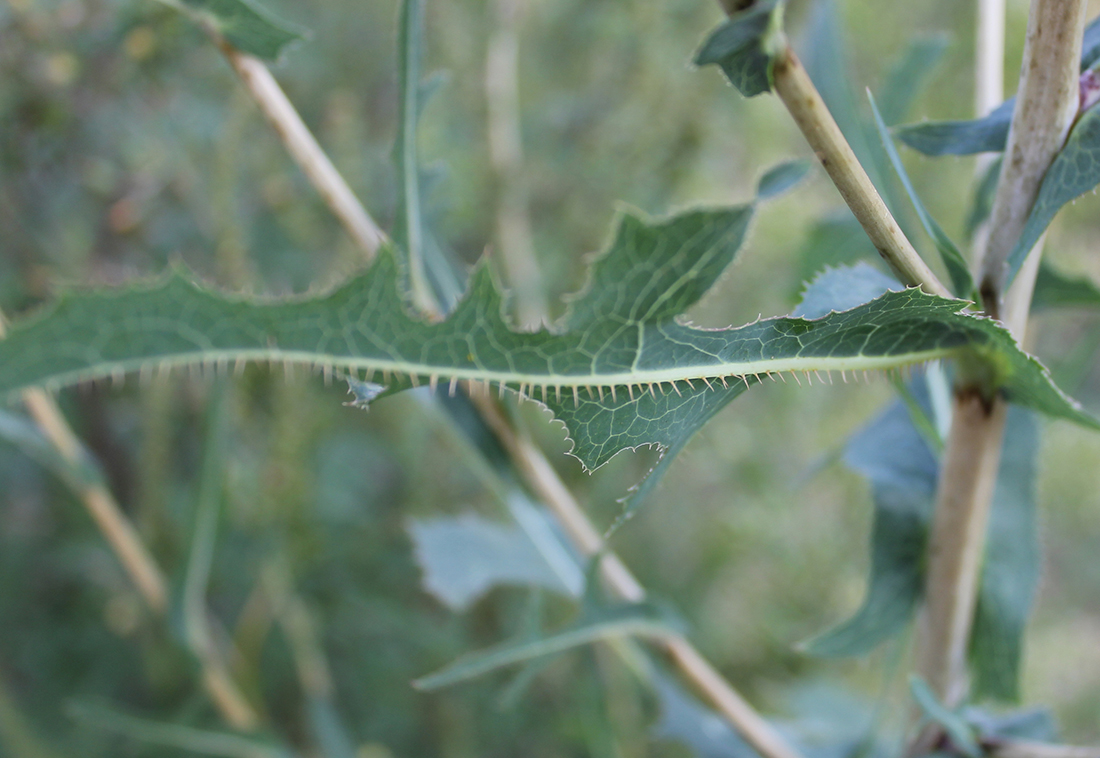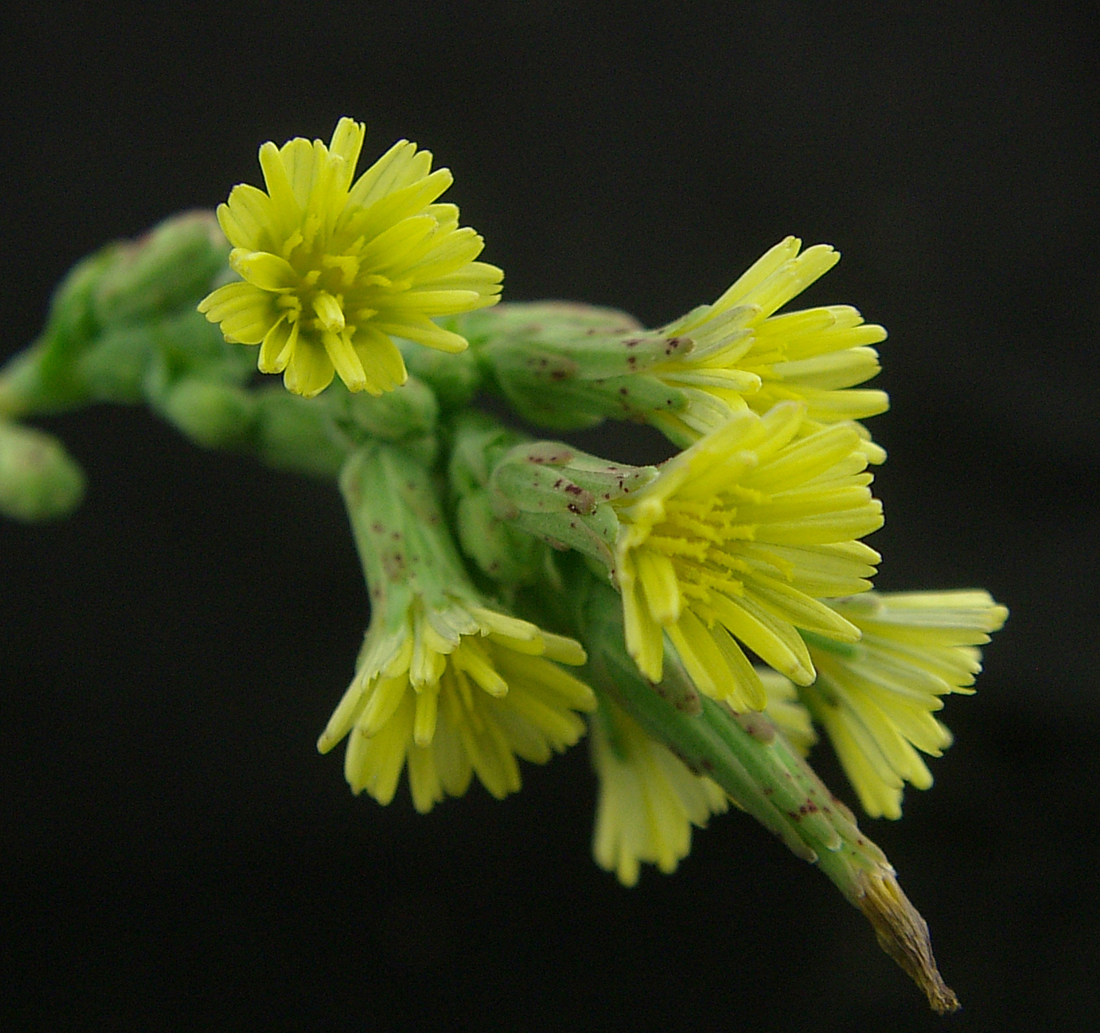Prickly Lettuce
- Composite or aster (Asteraceae family):
- Lactuca serriola L.
- EPPO code:
- LACSE
- Other names:
- Wild lettuce, compass plant
Species information
- Lifecycle:
- Winter annual, annual or biennial.
- Propagation:
- Reproduces by seed.
- Emergence:
- The majority of seeds will germinate in autumn with seedling plants often in the rosette stage in the spring.
- Habitat:
- Prevalent throughout the province in waste areas, pastures and roadsides and in agricultural crops under minimum till or no-till cropping systems.
- Competitiveness:
- Ontario studies have shown yield losses as high as 80% when no-till soybean was competing with prickly lettuce at a density of 50 plants/m2 while no yield losses in winter wheat were observed even though prickly lettuce densities were as high as 200 plants/m2 (Weaver et al., 2006).
Identification clues
Seedling
- Cotyledons:
- Rounded and tapering to the base.
- First leaves:
- A basal rosette with club-shaped leaves having finely-toothed margins.
- Mature leaves:
- Alternate orientation on the stem, variable in size and shape ranging from deeply lobed to without lobes but having spiny toothed margins and a prominent single row of stiff, sharp prickles on the midrib of the leaf’s underside; exudes a milky white juice (latex) when broken.
Mature plant
- Stems:
- Erect, hollow and hairless; ranging from 30-150 cm tall; green to reddish-green; exudes latex when broken.
- Flowers:
- Flower heads are made of yellow ray florets and are 8 to 10 mm in diameter; the flower heads are borne at the end of long fine stalks and arranged in a pyramidal panicle.
- Seeds:
- Yellowish-brown to brown, 2–4 mm long with prominent ribs on each side and attached to a white feathery pappus that most refer to as “fluff”.
- Roots:
- Fleshy taproot.
Often mistaken for
I know it's not Annual or perennial sow-thistle because prickly lettuce’s mature leaves have a row of spines on the underside of its leaf midrib.





Updated: January 13, 2023
Published: January 13, 2023